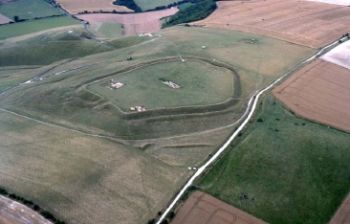Uffington Castle and White Horse Hill
Part of the Hillforts of the Ridgeway Project

This work is now published as: Miles, D., Palmer, S., Lock, G., Gosden. C. and Cromarty, A.M. 2003. Uffington White Horse Hill and its Landscape: investigations at White Horse Hill, Uffington, 1989-95 and Tower Hill, Ashbury, 1993-4, Oxfordshire. Oxford: Oxford Archaeology. Thames Valley Landscapes Monograph 18 and is available from Oxbow Books.
The report covers the collaborative fieldwork between the University of Oxford and Oxford Archaeology (previously the Oxford Archaeological Unit).
The evidence suggests that Uffington Castle hillfort was constructed at the end of an earlier linear ditch in the 7th century BC with a single circuit of box rampart and opposing eastern and western entrances. In the 4th century BC the rampart was remodelled into a dump-style and the eastern entrance was blocked. There was very little evidence for activity within the enclosure and our conclusion is that the hillfort was used for periodic ceremonial gatherings associated with the White Horse.

The hillfort was re-used and remodelled in Romano- British times, including for burial. By these times the White Horse could have been nearly 1,000 years old and it could have been its mythological attractions that drew people there, as is still the case today.
The report also covers the excavation of a Late Bronze Age settlement at Tower Hill, just along the Ridgeway track from Uffington Castle. This was discovered through the chance finding of a spectacular hoard of bronze artefacts.
There is also a detailed account of the scientific dating of the White Horse using OSL (Optically Stimulated Luminescence) dating, plus excavations in various parts of the surrounding landscape including a long barrow, round barrows, the linear ditch and the Manger.
